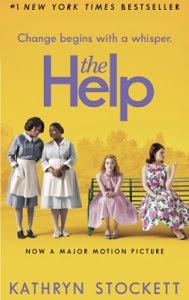Mia
Wasikowska had her sights set on Jane Eyre. When discussing her role in Cary
Fukunaga’s 2011 adaptation of Charlotte Bronte’s classic novel, she said:
“I had
just read the book in 2009, and I was halfway through it when I called my agent
and said, “This is amazing. Is there a script around or is anyone developing
the project?” There wasn’t at the time, but two months later, she emailed me a
script, and then I met Cary. It was a case of really good timing.”
The film
opens with Jane fleeing from Thornfield. She is lost, heartbroken, forlorn,
alone – there is no dialogue for several minutes as she stumbles over the
moors, her feet squelching in the mud and her sobs drowned out by the sounds of
falling rain and thunder.
This
scene occurs half way through the novel, and starting with it has a significant
impact on the flow of the story and the way that viewers emotionally respond to
it.
In the
novel, Jane comes upon Thornfield after years of hardship. Its dark and eerie
stone halls are her salvation from a life of cruelty at the hands of her family
and her Head Master at Lowood School. Edward Fairfax Rochester presents to her
a life of intellectual stimulation and equality that she had never imagined
before.
When the
novel reaches its climax and Jane flees, the reader laments her decision. As
Rochester begs her to stay, you beg along with him – give up your foolish
pursuit of self-respect and dignity Jane, and choose instead to live for your
own happiness, for love!
With
Fukunaga’s non-linear form of storytelling, the viewer is deprived of these
feelings. Instead of wishing Jane to return to Thornfield, those who are
unfamiliar with the story will spend their time wondering why she left.
In the
director’s commentary on the DVD, Fukunaga explains this deliberate decision.
He says the aim was to blend the classically romantic story with the element of
suspense. He succeeds.
Fukunaga’s
film is a dark, gothic thriller. And it is an enthralling, intoxicating story.
Wasikowska brings to life a Jane Eyre that is as true as Bronte’s own mind
could have intended – she is young, innocent and sharp and although she is
plain she is captivating. Michael Fassbender plays Rochester with an equal
firmness and precision – he is enigmatic, harsh, calculating and also
touchingly tender.
For any
fan, there are of course the obvious omissions – of Jane’s closeness with Miss
Temple and Bessie, and the intricacies of her familial ties with St. John
Rivers and his sisters. There is no visit from the fortune-telling Gypsy woman,
and Jane is not turned away from door after door during her travails through
the moors.
When the
conclusion of the film is signified by a sharp cut to a completely black
screen, fans of the book will undoubtedly sit until the end credits have run
their course, waiting for the visual interpretation of the book’s final
chapter, which begins with: “Reader, I married him.” But it does not come.
Fukunaga
explains his decision-making, his process of adaptation and omission:
“One of
the difficult things, when you have a novel that is 500-plus pages, is how to
be faithful but also be aware that you are making a film and not just visually
depicting a novel… Are you making this movie for people who know the story, or
are you making it because it’s a great story you are going to take liberties
with how you interpret it? I think you have to balance both worlds, in a way –
because the harshest critics will be the ones who know the novel and it’s dear
to tens of thousands of readers – but in two hours you are given a certain
amount of restriction to tell a story and therefore picking and choosing what
parts of a narrative you are going to tell to allow for the emotional impact of
the story to be the strongest. And I think that’s the most important in the
end, the emotionality.”
On this
level, the film is overwhelmingly successful. Bronte stories appeal to those
who enjoy the period romance, beauty and language of a Jane Austen novel, but who
also desire some grit, some raw human feeling. Fukunaga’s Jane Eyre has it in spades. It is full of feeling and the emotion
is forever at a fantastic height.
-->
The verdict:
Book
or Big Screen? Book
The film is:
4. A fine
adaptation that maintains the original’s exceptional qualities
I would be
very happy to receive your comments and feedback on ‘Book or Big Screen’ –
please click on the below link to tell me what film adaptation you are excited
about, or to suggest the book/film that I should review next.








































